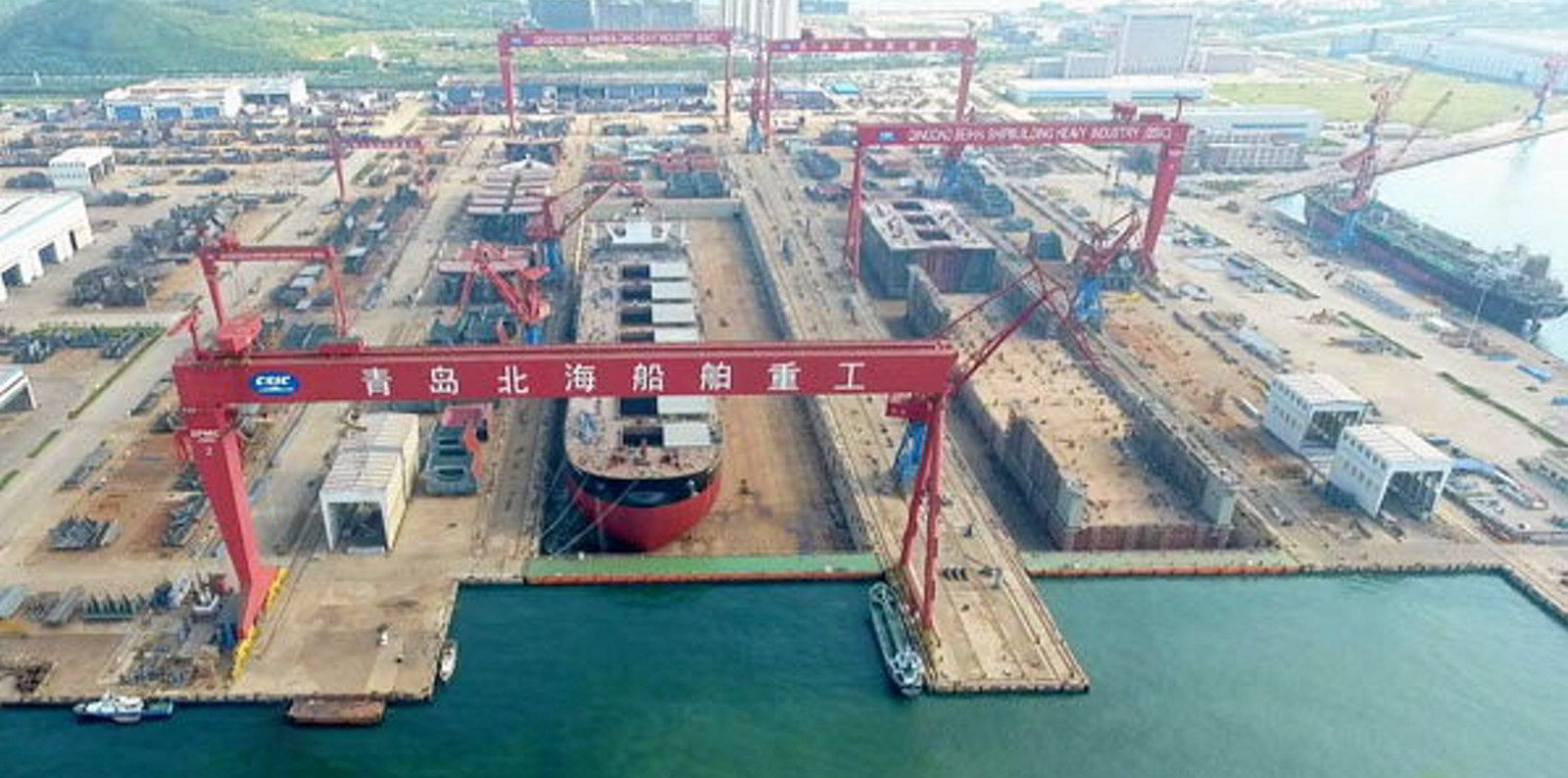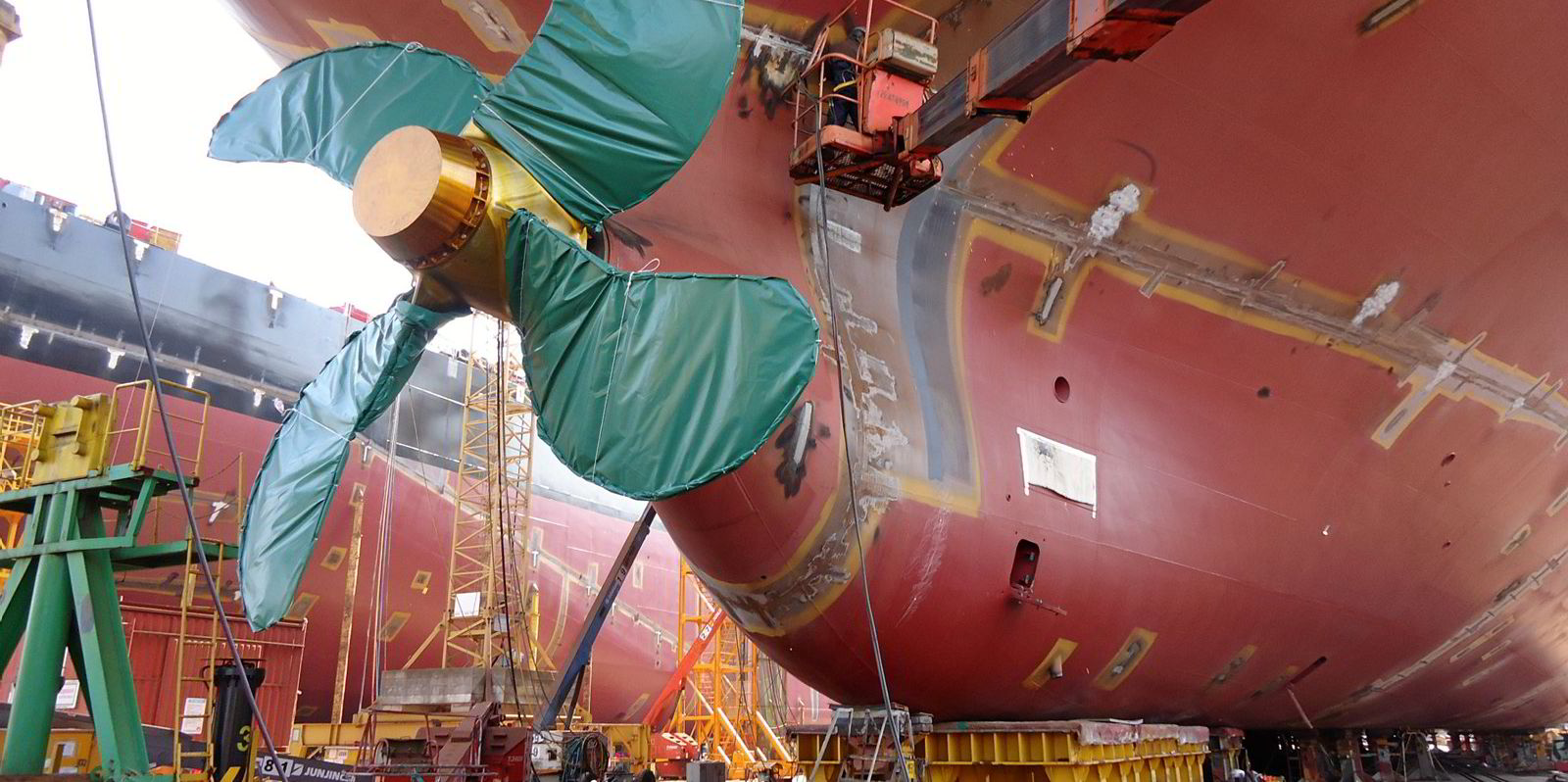Bulk carriers are considered the mainstay of China's shipbuilding industry.
This gave rise to a number of shipyards in the country in the 2000s and enabled China to become a leading shipbuilding nation. But for the last 10 months, the bulk carrier market has taken a backseat as containerships made up the bulk of newbuildings booked at Chinese shipyards.
According to Clarksons' China Intelligence report for October, Chinese shipyards secured 682 newbuildings of 18.3m cgt between January and September with 57% of the order volume being boxship newbuildings. Bulk carriers made up just 25% of the orders.
The volume of containership orders Chinese shipyards secured has even surpassed those of South Korean yards.
This begs the question: are bulker carriers becoming less important to Chinese shipyards?
Shipbuilding brokers say a strong demand for containership newbuildings together with attractive shipbuilding prices have led Chinese yards to turn their attention to this ship type.
"Given the current high steel-plate costs, constructing a containership brings in better profit margin than building a bulk carrier," said a broker. "The strong demand for boxships also plays an important role."
Jiangsu-based New Times Shipbuilding, which specialises in building tankers and bulkers, is one such shipyard in China that has turned to containerships. The privately-owned shipbuilder made a return to the boxship segment after an absence of eight years, when Greek owner Chartworld signed up for two 13,000-teu newbuildings.
Stuart Nicoll, director of Maritime Strategies International, said bulkers accounted for one-third of Chinese orders in the last few years, which is a greater proportion than during 2015 and 2016.
"Some of this is due to underlying cycles for different ship types, notably containerships. A lack of oil tankers in the recent ordering is also distorting the data," he said. "However, only a handful of yards have dry bulk carriers as the dominant ship type for orders placed in the last couple of years. Most of the large shipyards now have diversified orderbooks."
"Although we believe China will remain the leading shipbuilder of dry bulk carriers, this ship type will no longer be the most important sector for the Chinese builders," said Nicoll.
Brokers said Chinese shipyards are diversifying their products portfolio and pivoting towards higher value-added vessels.
Even product tanker shipbuilding specialist Guangzhou Shipyard International entered the niche pure car/truck carrier sector in May, when it struck a deal to build a series of 7,000-ceu LNG dual-fuel newbuildings for John Fredriksen's SFL Corp.
China's ambition to build high value-added vessels is not new. In the last few years, shipbuilding companies there have made major strides in moving up the newbuilding value chain.
Hudong-Zhonghua Shipbuilding has delivered LNG carriers and privately-owned Yangzijiang Shipbuilding has built up its orderbook with some large LNG dual-fuelled containerships.
China Merchants Heavy Industries delivered the second 200-passenger expedition cruiseship Ocean Explorer (built 2021) to Miami-based owner SunStone in July, while China State Shipbuilding Corp (CSSC)-controlled Shanghai Waigaoqiao Shipbuilding recently celebrated the completion of hull work of its first cruiseship newbuilding for Carnival Corp's joint venture cruise brand in China, CSSC Carnival Cruise Shipping.
Cruiseship shipbuilding is no easy feat and is dominated by European shipbuilders. South Korean shipyards have struggled to enter the sector, while Japan's Mitsubishi Heavy Industries quit the business after incurring huge losses.
Nicoll said the development of the Chinese cruise shipbuilding industry is all about two European collaborations.
Norway’s Ulstein Design & Solutions is responsible for the X-bow hull design and technical layout of Sunstone's vessels. Its involvement also includes the entire equipment package purchased in Europe and supervision of its installation.
"Also, there is strong government backing under the Made in China 2025 scheme, which included advanced shipbuilding capability. The order from Carnival at Shanghai Waigaoqiao is being driven by Fincantieri's technology transfer deal, with Fincantieri's subsidiary Marine Interiors a key player in the fitting out [of the vessel]. So much of the work is still being done in Europe. Critically, the latter is for the domestic Chinese market," said Nicoll.
"It is also a moot point whether European partners would have been able to retain as much control in a partnership with South Korean or Japanese yards, which may have been a deal killer.
Certainly, the shift east for cruise/ferry looks more inevitable to European yards than it did 10-15 years ago, although it also fair to say that when these tie-ups were being negotiated, the European yards could see orderbooks stretching to 2025 and it made sense to set up partnerships in Asia," Nicoll concluded.







